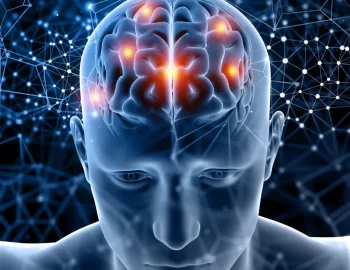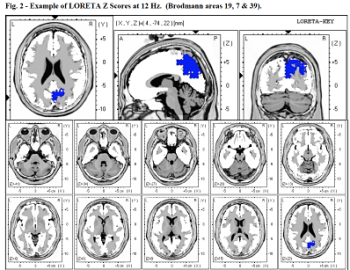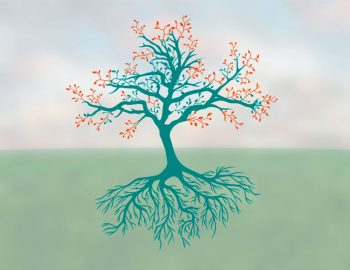Anxiety Disorders

What are Anxiety Disorders?
Anxiety becomes a mental health issue when it begins to impact a person’s daily life and their ability to live their life fully. Did you know that anxiety disorders are one of the most common mental illnesses? In 2013, an estimated 3 million Canadians (11.6%) aged 18 or older reported they had a mood or anxiety disorder. An anxiety disorder is a chronic condition characterized by excessive symptoms of uneasiness, worry, and even fear that negatively interfere with an individual’s ability to function calmly. When anxiety persists or stops a person from participating in everyday activities, it may be due to an anxiety disorder.
Symptoms of Anxiety
- They find it hard to go about everyday life.
- Their fears are out of proportion to the particular situation.
- Their worries feel very distressing and uncontrollable.
- Their regular activities cause irrational dread.
- They avoid certain situations that may cause them to feel anxious.
- Their feelings of anxiety and worry are overwhelming and persistent for an extended period of time.
Start your mental health journey!
Some common diagnoses of Anxiety Disorders include:
What is Generalized Anxiety Disorder?
Generalized Anxiety Disorder (GAD) is a worldwide problem affecting 9% (110 million) of the population. GAD involves having regular or uncontrollable worries about many different things in one’s everyday life. A person with GAD may be living in a state of constant worry, anticipating the worst-case scenario and dwelling on health, finances, family, job, spouse, and so on.
Causes of GAD can be the result of a combination of temperamental, environmental, and genetic factors. During a therapeutic assessment, we have discovered that a family history of anxiety or childhood trauma to be a very high-risk factor. Also, prolonged exposure to stress, family or personal illness, excessive use of tobacco, drugs, and alcohol definitely create the environment for Generalized Anxiety Disorder.
Symptoms of Generalized Anxiety Disorder
GAD is considered a chronic condition and there are various physical and mental symptoms associated with the disorder, including:
- Excessive worrying, feeling nervous
- Lack of concentration, inability to focus
- Muscle tension and aches
- Restlessness, irritability
- Sleep difficulties
- Fatigue
- Dizziness, lightheadedness
- Irregular or fast heartbeat
- Excessive sweating or hot flushes
Difficulties Arising from Generalized Anxiety Disorder
- Academic difficulties including constant worrying, lack of concentration, restlessness, and fatigue in class and schoolwork.
- Occupational difficulties such as the inability to perform work tasks effectively due to cognitive difficulties, fatigue, and insomnia.
- Social difficulties such as struggles to communicate and engage socially with friends and relationships as a result of tension and fear.
Causes of Generalized Anxiety Disorder:
- Changes in brain chemistry and function
- Genetics
- Changes to the way threats are perceived
- Trauma
- A combination of biological and environmental stressors
What is Panic Disorder?
Panic Disorder affects 2-3% of people worldwide, with nearly all cases affecting teens or adults. It refers to having frequent and unexpected panic attacks without a clear cause or trigger. Panic attacks are an exaggeration of the body’s normal response to danger or stress. Having panic disorder also means you are constantly afraid of having another panic attack and experiencing changes in behavior as a result of these panic attacks.
This can lead to other disorders such as phobias (heightened fears) since these individuals will want to avoid the areas or situations where they have had a panic attack in the past.
Symptoms of Panic Disorder Include:
- a racing heartbeat, heart palpitations.
- a drastic change in body temperature, feeling very hot or very cold.
- sweating, uncontrollable shaking, and trembling.
- feeling like legs are turning to jelly, shaky, or going to give out.
- lightheadedness, dizziness, faintness.
- nauseousness, feeling sick to the stomach.
- chest pain, feelings of choking, abdomen cramping.
- struggling to breathe, shortness of breath.
- feeling disconnected from your mind, body, or surroundings.
- a feeling of impending doom, dying, losing control.
- heightened fear and anxiety of the next panic attack.
Difficulties Arising From Panic Disorder:
- Frequent panic attacks with indistinct triggers or fear of experiencing another panic attack.
- Occupational panic attacks or fear of occurrence, inability to perform tasks effectively.
- Academic panic attacks or fear of occurrence at school, or anxiety of finishing schoolwork, resulting in missing school or dropping out of school.
- Social panic attacks or fear of panic attacks in social situations or places, resulting in a fear of social environments or forming relationships.
- Difficulty in looking after oneself.
- Difficulty at work, performing effectively, or maintaining employment.
- Difficulty in forming and maintaining relationships.
For some people, physical symptoms of a panic attack can come upon them very quickly, usually peaking within 10 minutes and drop off after 20 to 30 minutes. In some cases, they can last longer. Panic attacks can be very scary, and a person can experience multiple physical and mental symptoms.
What Causes Panic Disorder?
Panic Disorder can be caused by a combination of temperamental, environmental, and genetic factors. Some forms of childhood emotional trauma, such as physical or sexual abuse, may also result in panic attacks or panic disorder. There is some research that suggests that people who have panic disorders may also be highly sensitive to sensory experiences like sounds, smells, sunlight, weather. Although it’s not entirely clear if those sensitivities are part of the cause of the panic disorder, or it may be an effect of the disorder.
What is Social Anxiety?
Social Anxiety is where an individual will have fear, worry, and anxiety in social settings. It’s also called social phobia. If you have this form of anxiety, you will have a heightened fear of embarrassing yourself or will have negative thoughts about how others will see or portray you. In many cases, you may avoid talking or interacting in social situations or may avoid social situations altogether.
Symptoms Of Social Anxiety Disorder Include:
- Fear of social situations
- Fear or anxiety of social situations in which the individual may be scrutinized
- Fear that individual will act in a way that will be criticized or be evaluated in a negative way
- Out of proportion fear or anxiety
- Anxiety that disrupts daily living
- Fear lasting 6 or more months
What Causes Social Anxiety?
The causes of Social Anxiety Disorder aren’t entirely understood but are believed to be caused by a combination of environmental (childhood maltreatment) factors and genetics. Negative experiences such as bullying, family conflict, and sexual abuse can bring on the disorder. Chemical abnormalities including a serotonin imbalance can contribute, and an overactive amygdala, the area of the brain that controls our fear response and thoughts of anxiety, can also be a cause.
What is Phobia?
Phobia is a type of anxiety disorder that’s defined by having an excessive and irrational, persistent fear reaction over a situation or object. If you have a phobia, you can panic when you encounter the source of your fear. The fear and anxiety are out of proportion to the actual danger posed by the feared situation or object. Common phobias include crowds, spiders, snakes, bridges, open water, flying, or blood.
Brain functional imaging and research has shown that people with phobias have an increased activity of their amygdala when exposed to phobia stimuli or triggers. People challenged with phobias have issues regulating their serotonin levels in their brains.
In Canada, the lifetime prevalence of specific phobias is around 12-13%, with most of them starting in early childhood.
Symptoms of Phobia Include:
Physical Symptoms:
- Racing Heart
- Sweating
- Nausea
- Difficulty breathing
- Trembling or shaking
- Dry mouth
- Chest pain or tightness
Psychological Symptoms:
- Experiencing overwhelming anxiety or fear
- Knowing that their fear is irrational but feel powerless to overcome it
- Fear of losing control
- Feeling an intense need to escape
What is Separation Anxiety?
Separation Anxiety Disorder is a childhood condition pronounced by anxiety when a child is separated from one or both of their parents or guardian. Part of normal childhood development, and most children outgrow the disorder before age two. In rare cases, separation anxiety disorder can become problematic in early adolescence. To meet the diagnostic criteria, the features will be persistent for at least four weeks and interfere with regular activities.
Symptoms Of Separation Anxiety Disorder Include:
- Fear of being alone
- Anxiety
- Constant worrying
- Helplessness
- Sadness
- Nightmares
- Headaches, stomachaches, and other physical symptoms when in separation.
What Causes Separation Anxiety?
Generally, symptoms arise as a result of a child feeling unsafe, threatened, or other environmental stressors such as:
- change in environment
- stress as a result of divorce, loss of a loved one, family pet, going to school for the first time
- An over-protective guardian
- Genetics with a heritability that’s estimated to be at 73%.
What is Selective Mutism?
Selective Mutism is predominant amongst children under the age of 5. It’s diagnosed when a child consistently doesn’t speak in some situations but comfortably in others, such as in school, at sports practice, or other social places. On the other hand, when they’re comfortable, these children can talk someone’s ear off.
This form of anxiety can be harmful to a child’s life and can prevent them from excelling academically, making friends, and engaging in other activities that could impact them later in life.
Symptoms of Selective Mutism Disorder Include:
- Excessive shyness
- Social isolation
- Clinging to caregivers
- Compulsive traits
- Depression
- Oppositional behavior
- Rudeness and disinterest
What Causes Selective Mutism?
Research is ongoing to learn about what influential factors are involved, however, Selective Mutism seems to develop in childhood as a result of another anxiety disorder, untreated psychological issues, a traumatic experience, self-esteem problems, a family history of anxiety disorders, and parental behavior. Selective Mutism is not caused by a physical impairment or language deficit.
How we can help?
To ease your anxiety symptoms, we integrate both psychotherapy and Neurotherapy healing approaches. Beginning with our therapeutic assessment to help signal the direction of a diagnosis, you’ll receive your personal protocol for treatment. Also, our qEEG brain mapping system allows us to identify and understand the nature of your anxiety, whether it’s a general uneasiness or worry like GAD, or if your brain is presenting conditions of PTSD, for example.

Biofeedback
Learn how biofeedback therapy allows you to control and regulate your body’s physiological functions more effectively.

Neurofeedback
Discover how neurofeedback training can improve your cognitive function and optimize your brain.

Functional Medicine
Discover how functional medicine can restore your health through a holistic (whole mind/body) approach.

Nutrition Counselling
nutritionists use sophisticated data from your lab results combined with details of your mental, emotional and physical health to create a practical, simple and personalized program for you.



